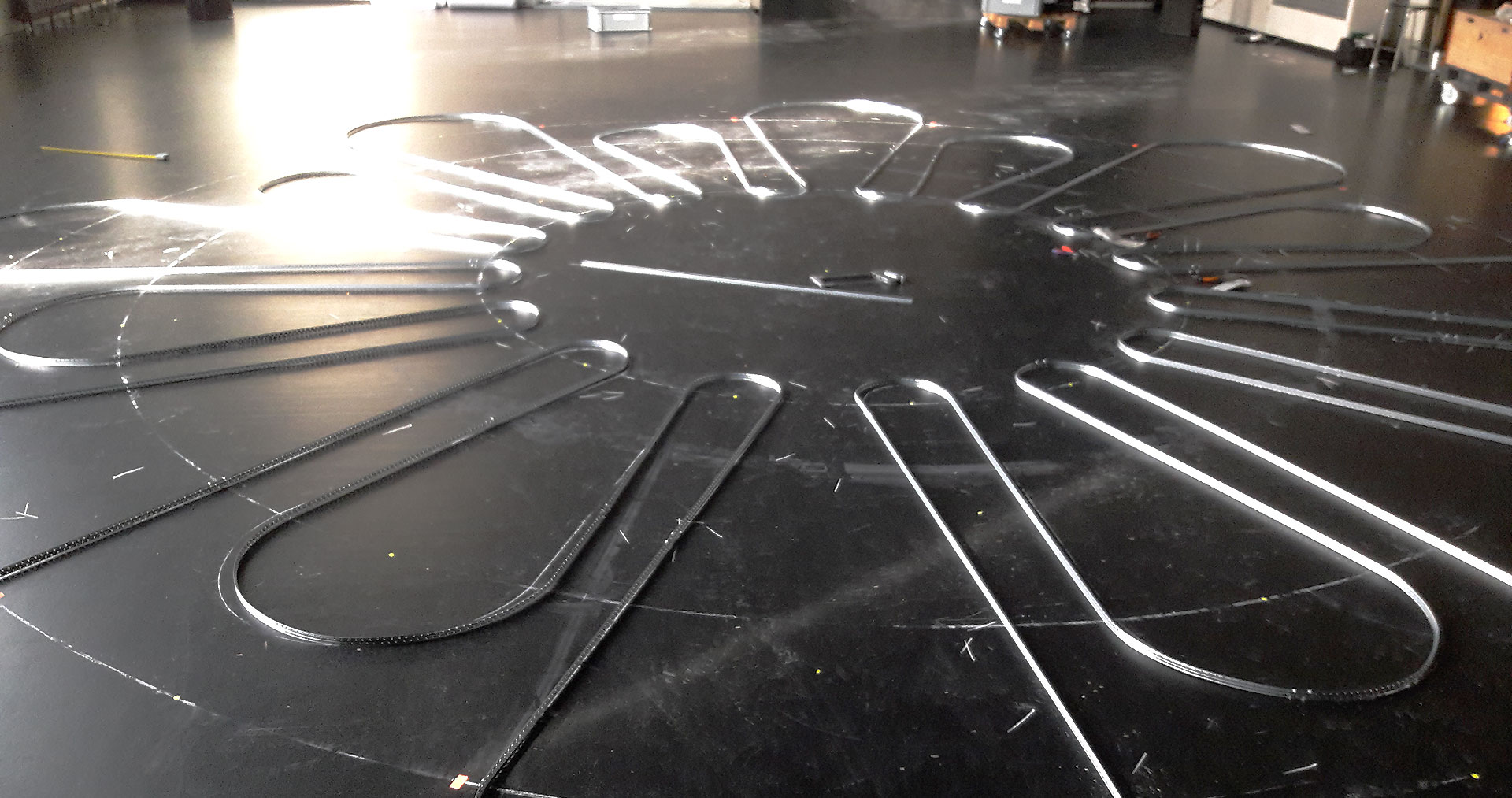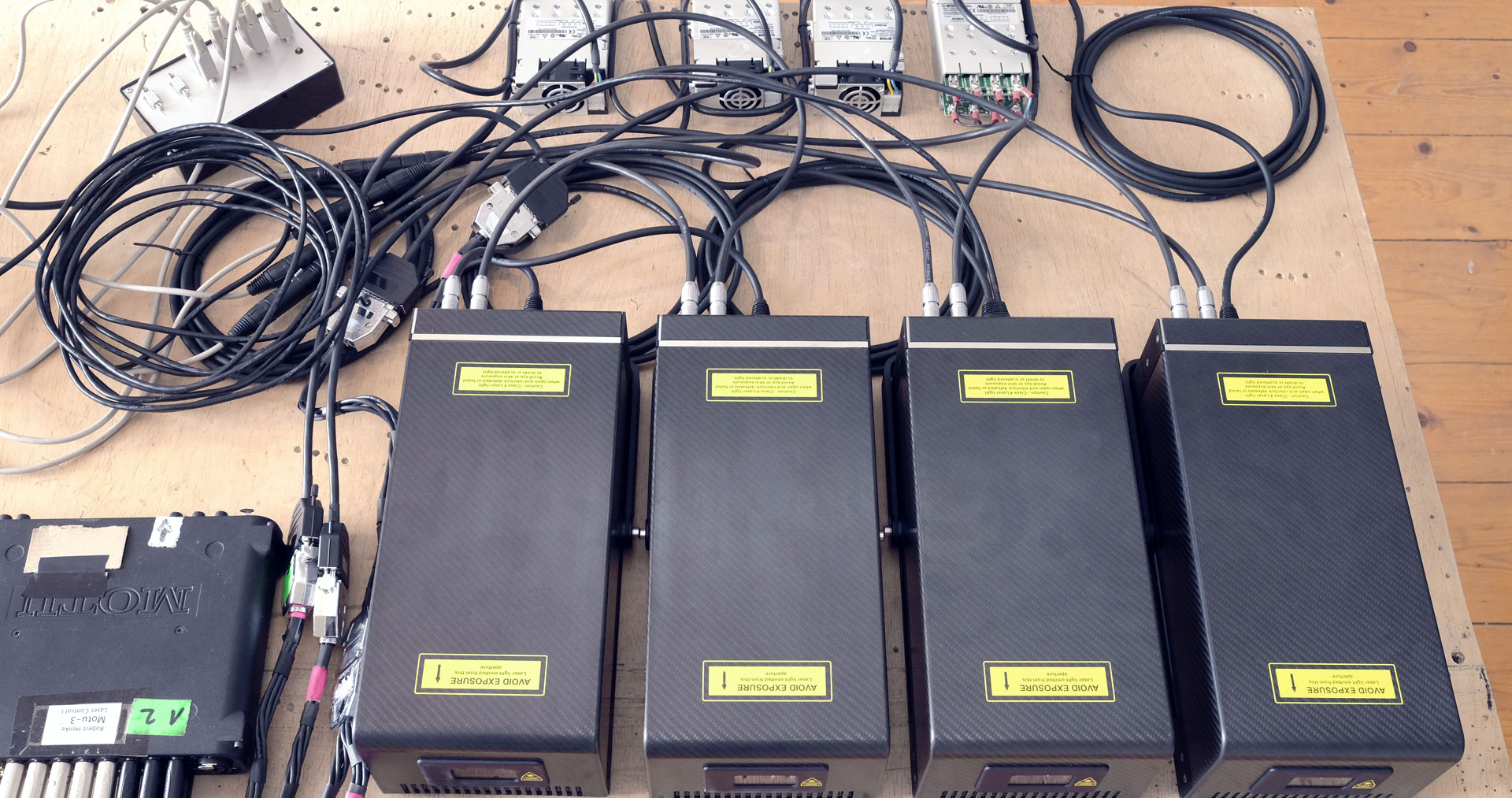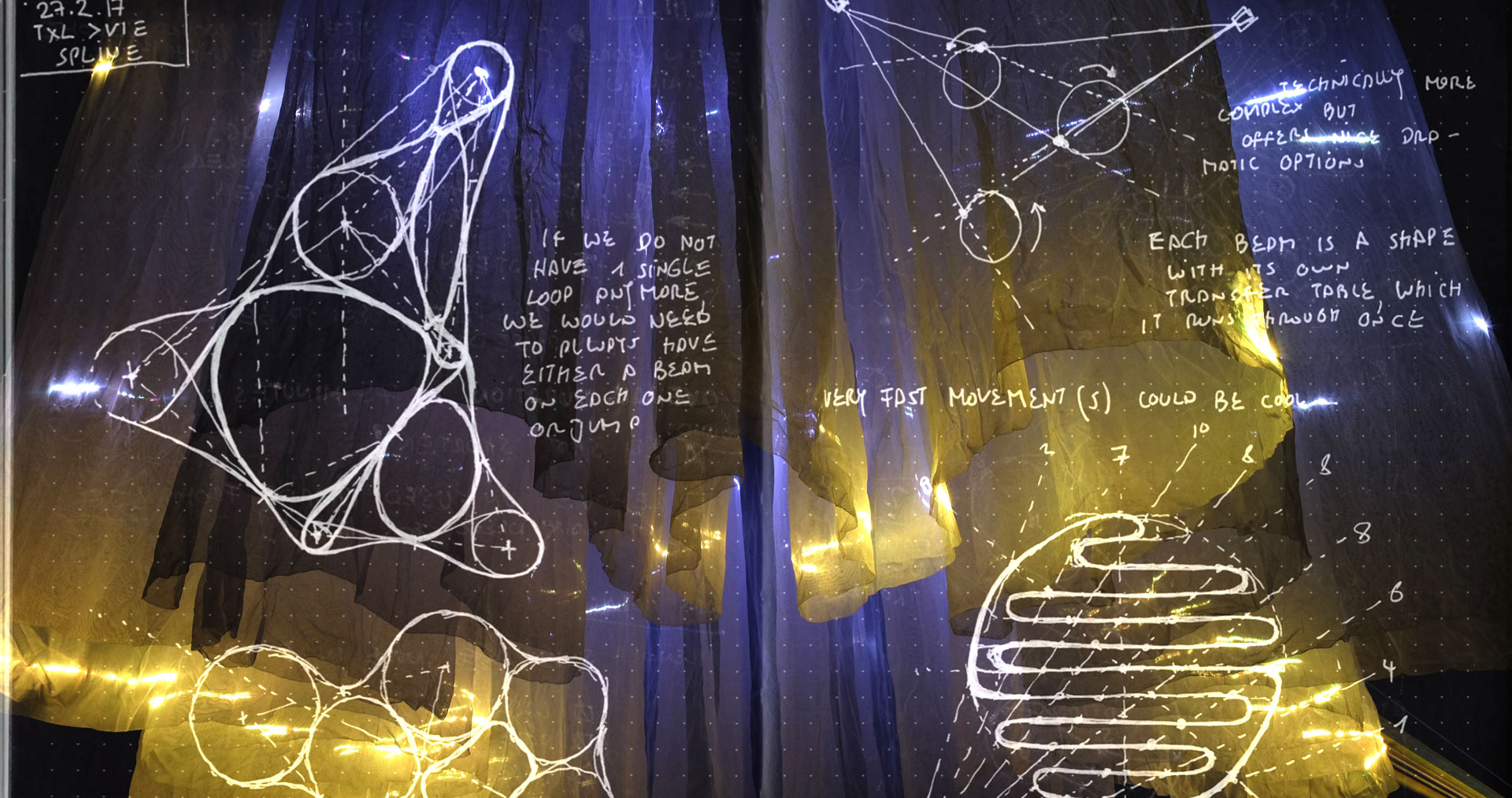 First sketch of curved curtain shapes, February 2017, and photo from Beijing version, October 2017
First sketch of curved curtain shapes, February 2017, and photo from Beijing version, October 2017
Therefor, a new installation had to be developed, with similarities to Fall, but also essential differences, and suitable for the space available. I wanted to explore further the usage of thin mesh fabric as projection surface for multiple lasers. With such fabric, each single beam of light can pass through multiple layers, creating a high density of dots in a 3D space with relatively little effort. The difference to Fall is the shape of the projection surface. instead of using 180 individual square sheets, suspended from the ceiling to form a fractured 3D grid, I decided to utilise one single curved curtain.
Fall is using two large RYGB laser systems, capable of producing intensive and rich color. For Spline four much smaller lasers are utilised instead, compromising in power, which is not a problem in the smaller space, and in color range, which informed a decision towards a less colourful appearance. Most significantly, we are gaining the ability to have twice the amount of beams emerging from the four corners of the room.
The core concept of Spline is to treat the curved curtain as one single projection surface, with all four lasers pointing at sixteen defined moving spots on that surface. Due to the different positions of the lasers in space and the multiple curves of the curtain, this results in a large number of beam intersections with the curtain.However, for Spline I departed from that concept again. What I wanted to do with the lasers was simple, but at the same time beyond the capabilities of the Lumiere software. Extending that software was one option, but it turned out to be faster to write a small engine specifically for Spline, with a potential port of some aspects to a future revision of the Lumiere engine. The concept for all movements in Spline is simple: Sixteen objects traverse along the curtain, which is nothing but a warped screen with two dimensions. Each of the objects has a color and a position. The position can be set directly as X,Y coordinates, and each object has its own initial speed vector, friction, and some sort of drift / gravity associated. Colors can be set to an initial value and a decay parameter. A small codebox / gen~ patch in MaxMSP does all that in the audio thread, feeding the lasers with pseudo-audio signals for the X,Y coordinates of the scanners and the 3 colors.
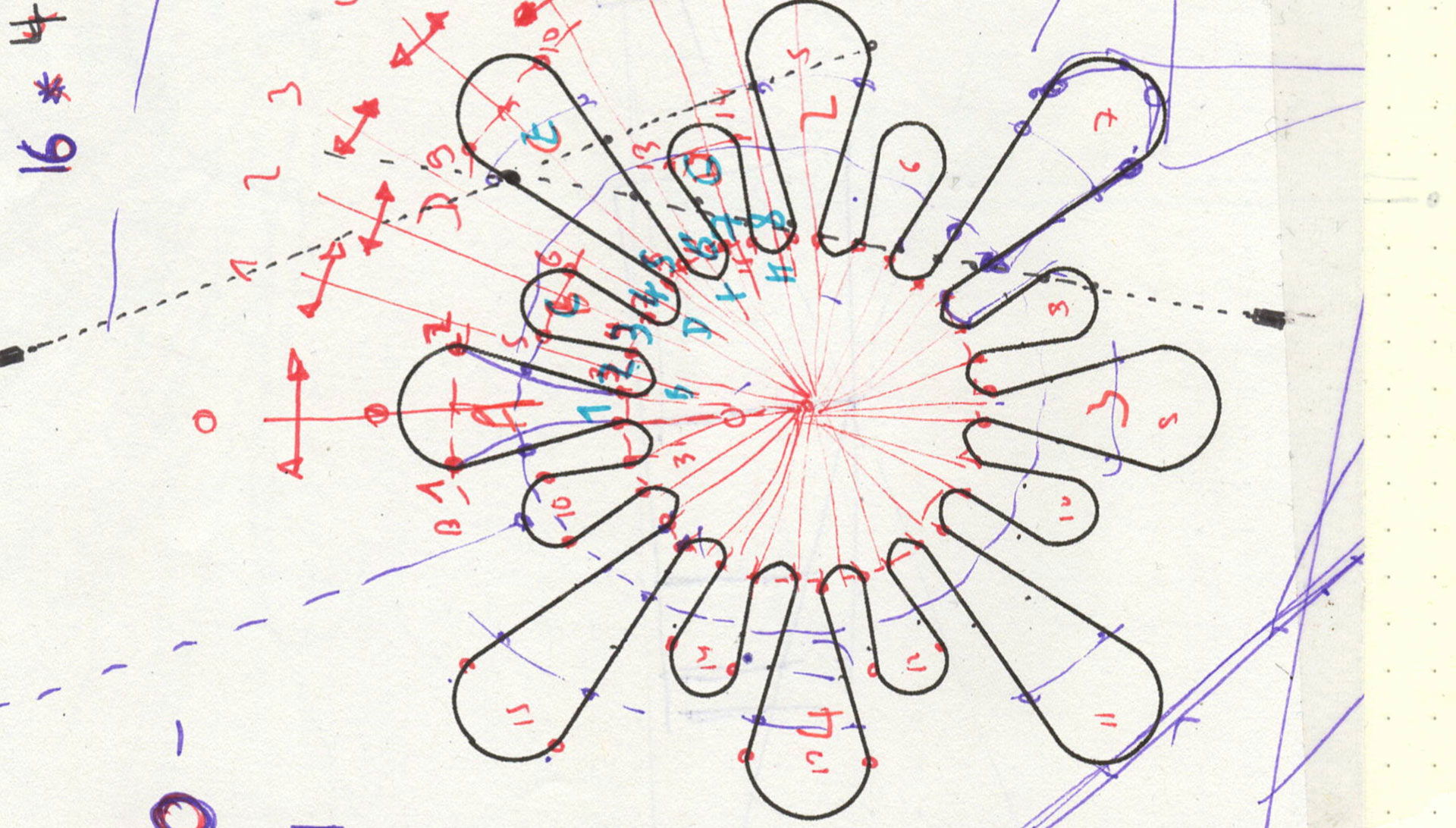
Shape of curtain
The overall 'behaviour' of the Spline installation and its look is defined by a set of nested random operations and probabilities, which allow gestures like "explosion", "freeze" , "flow" etc. The result is a mix of predictive behaviour and random coincidences, which I find always very rewarding to experience, since it has an eternal quality to it, unlike a fixed length video loop.
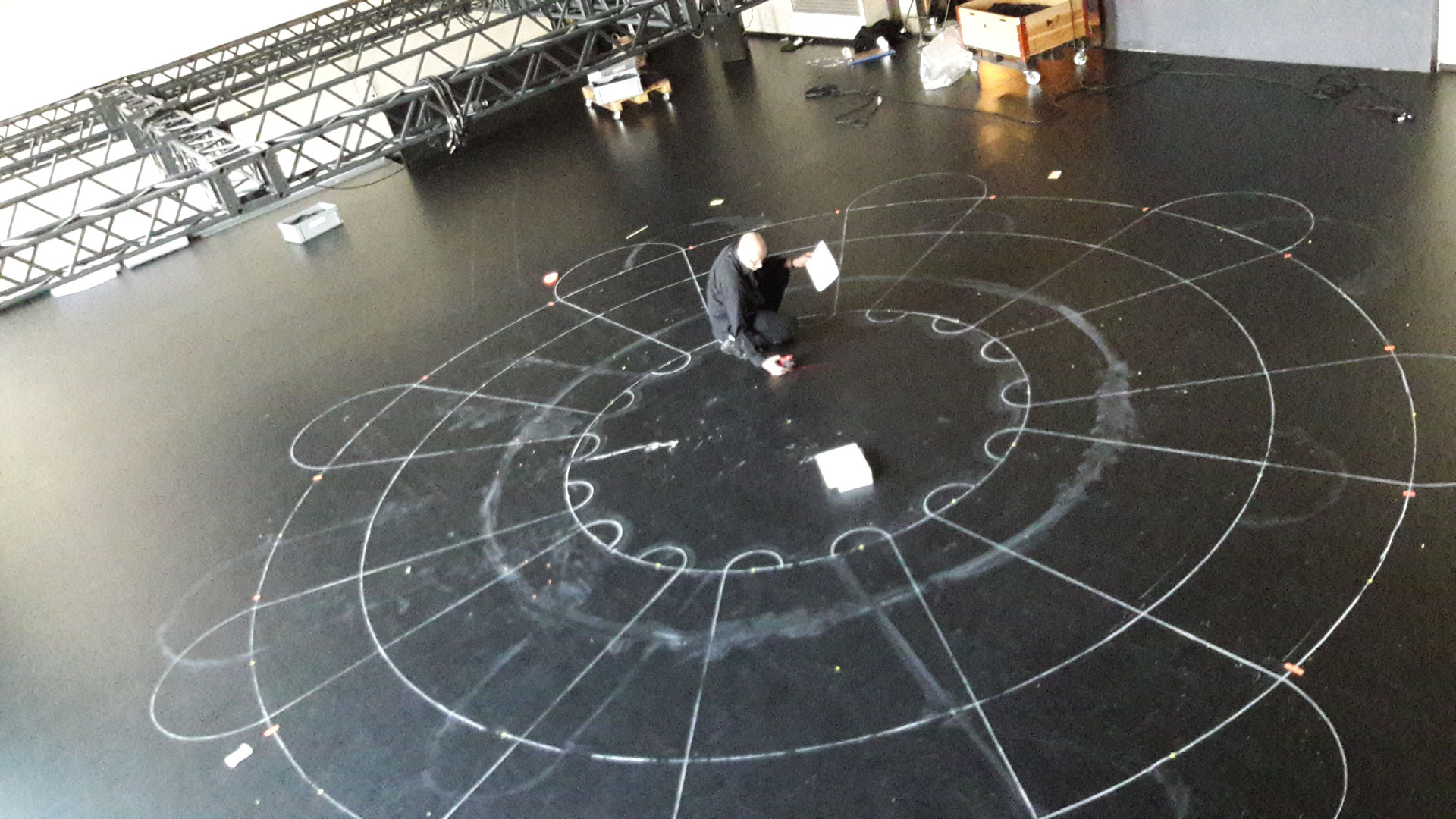
Preparations for bending the spline shape in Bern
For the second exhibition in Beijing, China, far more effort went into the preparations of pre-fabricated metal parts, which were assembled on site, forming a new shape with a desired accuracy of less than +-1cm derivation at any point. In practise this precision could not be reached, mainly due to problems with suspending the complete 4,5m wide structure from the 12m high ceiling of the museum without it moving away from the initial position or slightly twisting.
Instead of manually adjusting the lasers using hundreds of calibration points, now based on the exact shape of the spline, all laser beam angles are calculated using the physical location of the lasers and the spline object: Before mounting the object, each laser unit is adjusted to deliver a perfect square of a certain size, which includes necessary correction curves for nonlinear behaviours of the scanner system, such as the 'barrel' distortion due to the inherent distance between the vertical and horizontal scanner mirror.
As a result of that process, it is be possible to accurately tell the laser which angles to create. Once the lasers and the spline are mounted in their final positions, the relative position between the lasers and the shape is measured, and the lasers are angled at a common center point, serving as reference. This ensures the virtual representation and the real world match, and after entering the measured data points into the software, all four lasers will hit the same spots on the fabric.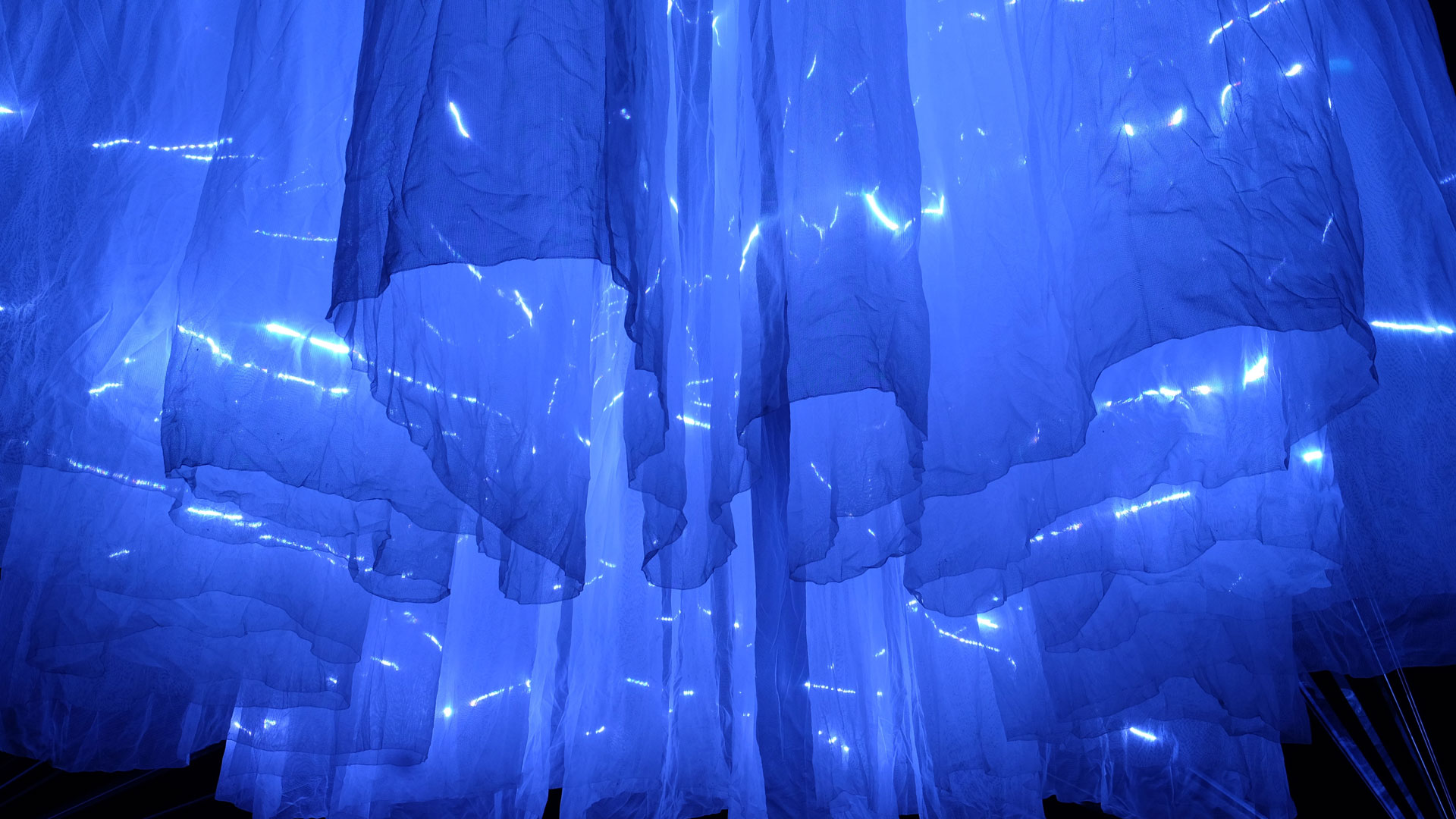
'Expressive' curtain shape of spline in Beijing
